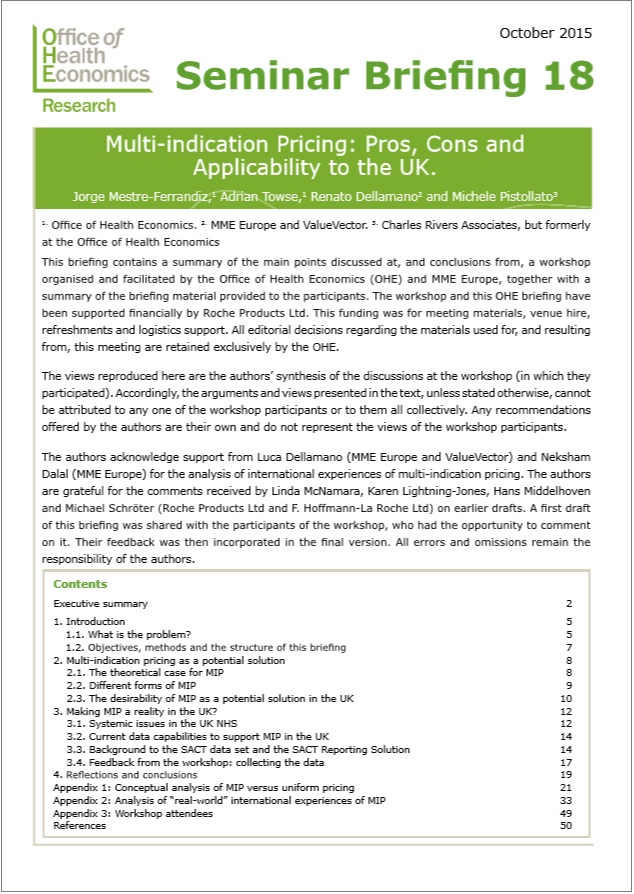Unlocking the Value of Combination Therapies

Multi-indication pricing (MIP) involves setting a different price for each major indication approved for a medicine. As value is likely to differ across major indications, if prices paid for on-patent medicines are to reflect their value, then multi-indication medicines should have different prices across major indication, reflecting different values.
Multi-indication pricing (MIP) involves setting a different price for each major indication approved for a medicine. As value is likely to differ across major indications, if prices paid for on-patent medicines are to reflect their value, then multi-indication medicines should have different prices across major indication, reflecting different values.
A workshop with health care system stakeholders was organised to explore (i) the attractiveness of MIP as a potential solution to the challenge of providing optimal pricing for, and reimbursement of, multi-indication drugs and (ii) the feasibility of implementing MIP in the UK’s National Health Service (NHS). The workshop agreed that relative prices should reflect relative value, with prices for any indication not exceeding value, and thus MIP could be a way forward. However, a number of operational challenges need to be overcome.
This OHE Briefing contains a summary of the main points discussed at the workshop, together with a summary of the briefing material provided to the participants.
Multi-indication Pricing: Pros, Cons and Applicability to the UK
